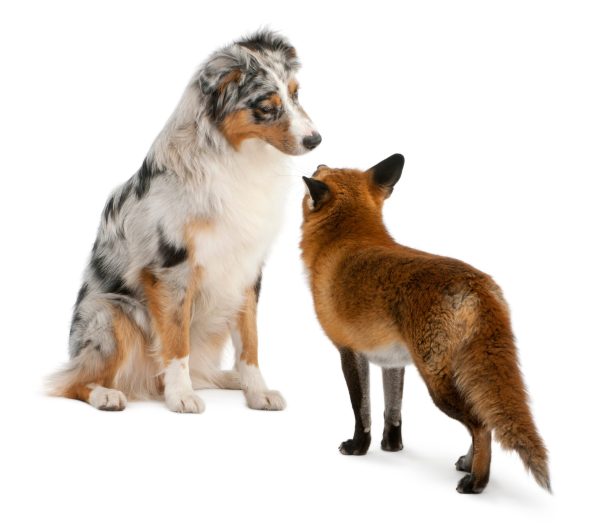
Scroll down to see a scene from the popular movie, “Wayne’s World,” that helps us set the stage
↓ ↓ ↓ ↓ ↓ ↓ ↓ ↓ ↓
↓ ↓ ↓ ↓ ↓ ↓ ↓ ↓ ↓
Our post topic isn’t about a beautiful woman, or the nerdy and socially awkward “Garth” who has a crush on her, but it is about the term, “foxy” or “fox.”
We doubt we’re alone in having a penchant for useless dog trivia (and we suppose that makes us dog nerds), but you just never know when, in the course of a game show or casual conversation, you’ll be asked:
How many AKC recognized dog breeds include a reference to “fox” or “foxy” in their breed standard as a way to describe the breed, or as a breed fault? Itcouldhappen.
The answer is thirteen.
In which AKC group is the majority of “fox” or foxy” references to be found?
With four references, it’s the Non-Sporting Group.
The breeds using the word follow, but take note that not included are breeds that have the word “fox” in their names.
Cardigan Welsh Corgi: Overall silhouette long in proportion to height, culminating in a low tail set and fox-like brush;
Pembroke: The head should be foxy in shape and appearance;
The Finnish Spitz presents a fox-like picture;
The Keeshond attracts attention “not only by his coloration, but by……a richly plumed tail well curled over his back [and] his foxlike expression;
Shiba Inu [is] Bright orange-red with urajiro lending a foxlike appearance to dogs of this color;
The Schipperke is an agile, active watchdog and hunter of vermin. In appearance he is a small, thickset, cobby, black, tailless dog, with a fox-like face;
The Labrador Retriever: Yellows may range in color from fox-red to light cream;
The Norwich Terrier, spirited and stocky with sensitive prick ears and a slightly foxy expression;
The Cairn Terrier’s head [is] shorter and wider than any other terrier and well furnished with hair giving a general foxy expression;
Pomeranian: Expression – may be referred to as fox-like;
Alaskan Malamute: [The tail] is not a snap tail or curled tight against the back, nor is it short furred like a fox brush;
Great Pyrenees: Faults – Too heavy head (St. Bernard or Newfoundland-like). Too narrow or small skull. Foxy appearance;
Siberian Husky: The well furred tail of fox-brush shape is set on just below the level of the topline.
For anyone wondering, the fox is related to dogs as a member of the Canidae family, but the dog is part of Canis lupus, and the fox is part of the Vulpes genus. Another difference between the two is that the fox diverged from wolf lineage 12 million years ago, while dogs diverged around 40,000 years ago.
And finally, a fox can’t breed with a dog as they do not share a compatible number of chromosome pairs, or genetic materials needed to interbreed.
For grins, you might enjoy this story about the surprising friendship between dog and a wild Fox.
Image: Red Fox (Vulpes vulpes) playing with an Australian Shepherd by Eric Isselée/Adobe Stock Photo
